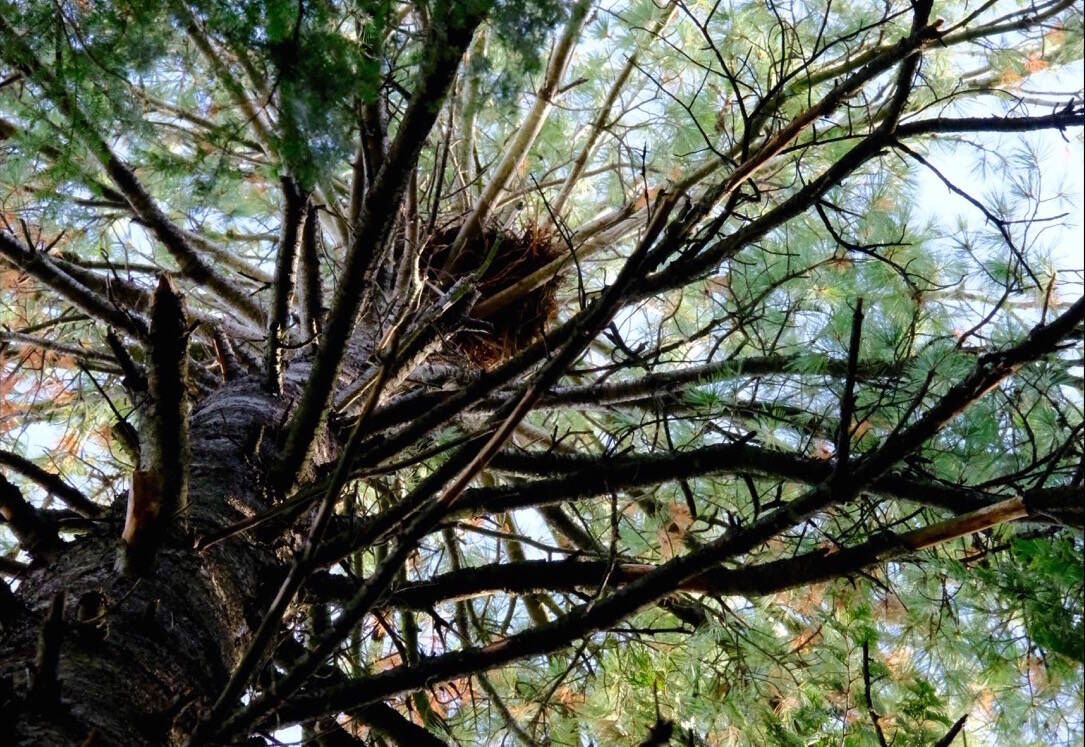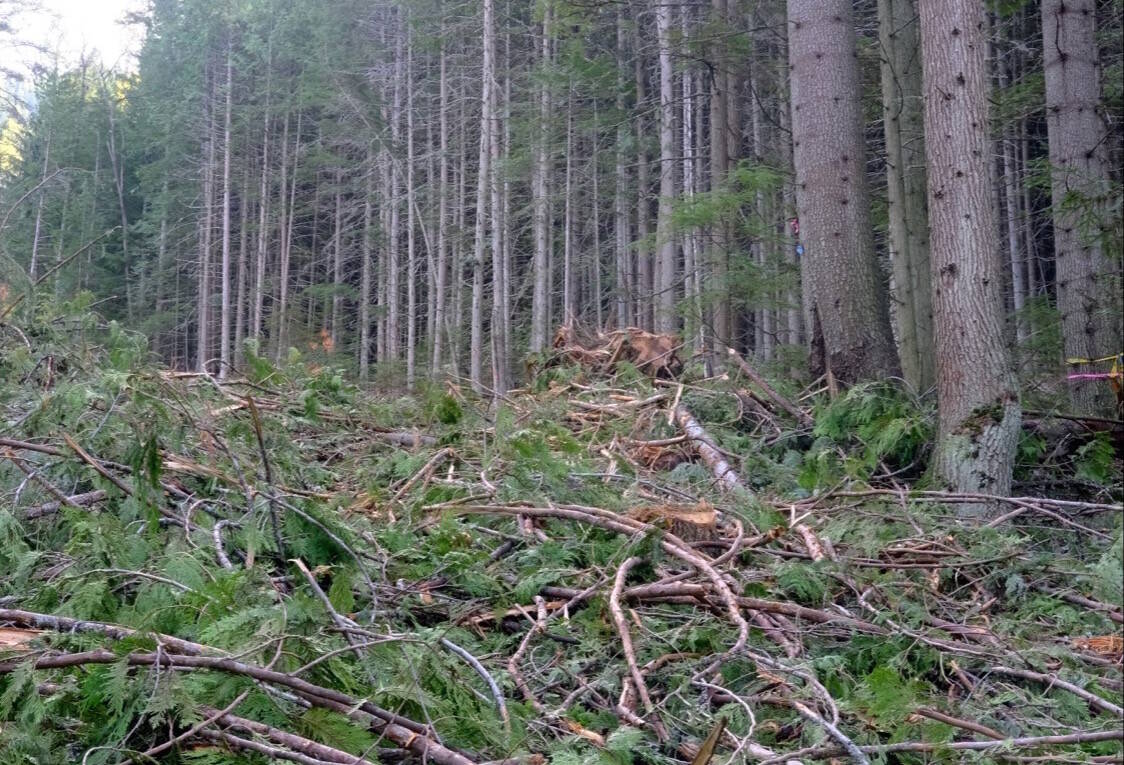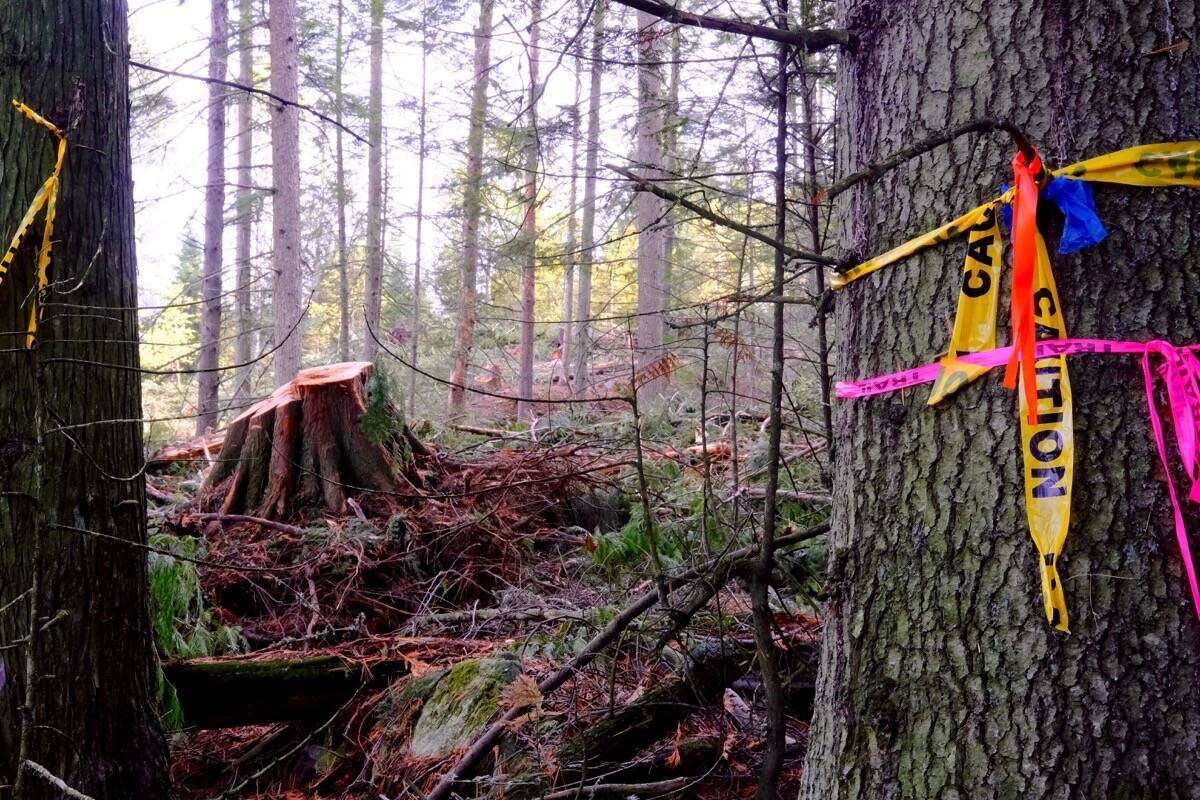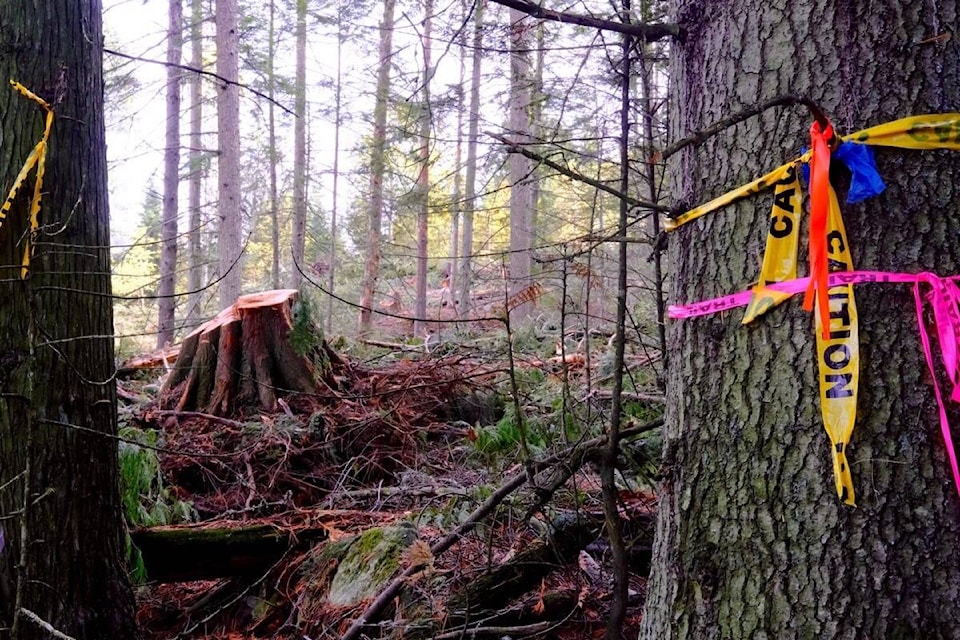A Nelson biologist says the Granite Pointe Golf Club has ignored her advice on how to protect two heron nests in an area the club has logged southwest of its golf course.
“They’ve ignored all of the written documentation and verbal direction that they received on phone calls and interactions with ministry biologists from Cranbrook and Nelson, and they ignored my advice,” says Marlene Machmer. “They’ve ignored my attempts to volunteer to help them back in April to develop a prescription for this heron nest area for free.”
She says the club failed to leave a buffer zone, according to provincial guidelines for this species required by provincial legislation, around the trees when the area was logged this fall.
Machmer is attuned to blue herons and their habitat because since 2002 she has monitored all heron nests in the Columbia Basin for the Fish and Wildlife Compensation Program and the Columbia Basin Trust.
In April, when she learned that the club would be logging the land, she informed the club and contacted Ministry of Forests, Lands, Natural Resource Operations and Rural Development (FLNROR) biologists in Nelson and Cranbrook.
The purpose of the golf club’s logging is to create new fairways to replace existing ones that will become the site of a planned housing development on Granite Pointe land.
Am Naqvi, president of Granite Pointe Golf Club, declined to comment when contacted by the Nelson Star.
In B.C., the interior subspecies of the great blue heron is a blue-listed species, because of declining populations and sensitivity to human activities.
In April, Granite Pointe’s board of directors received an email from FLNROR biologist Irene Manly, who explained there were three active blue heron nests in two trees on property the club was planning to log.
“Herons are nesting at this time and extremely sensitive to disturbance,” Manly wrote, citing section 34 of B.C.’s Wildlife Act. “The nests and nest trees of herons are protected year-round, whether or not the nest is currently active.”
Manly went on to ask that the club mark out a buffer zone of 200 metres around the two nest trees and not log within it.
In her email, Manly included links to a provincial guide on development around blue heron nests, and to a document of environmental best practices for at-risk species.
Photo 1
The nest trees on the edge of Granite Pointe land are two large white pines standing very close to each other in a forest southwest of the current golf course. The nests are, according to Machmer’s estimate, almost 50 metres above the forest floor — so high that they are difficult to see clearly from the ground.
In an April email to Granite Pointe, Machmer wrote, “Simply leaving a small buffer (e.g., 25 m as you suggested) is not adequate for herons. They require much larger mature-to-old forested buffers around their nest sites to avoid disturbance and nest abandonment and reproductive failure.”
Herons are susceptible to development near their nests, she says, and will typically abandon them if disturbed. She says she and a local forester offered to help Granite Pointe develop a logging plan and a mapped buffer that would minimize the impact on the nests.
“You cannot cut down a heron nest when it is occupied, or for five years after the last known occupancy, because they might come back,” she says. “And that’s because they’re perennial nesters. They come back to the same sites year after year, as long as they’re not being disturbed.”
In addition to B.C.’s Wildlife Act, two other pieces of legislation apply to heron nests.
The federal Migratory Birds Act prohibits the destruction or disturbance of nests.
The Kootenay-Boundary Wildlife Features Order designates heron nests as wildlife habitat features, and states that “forest and range activities must not damage or render ineffective a wildlife habitat feature.” The order prescribes buffer zones for blue herons depending on the level of disturbance, in this case 200-to-300 metres.

Machmer says the number of active heron’s nests in the Columbia Basin decreased by 40 per cent between 2003 and 2017, down from 286 to 173. She says this is due to development a disturbance.
Herons compete with other stick-nesting birds (bald eagles, ospreys, cormorants) for breeding sites and are gradually getting squeezed into smaller and smaller areas, she says. Herons settle into one area, then the area is developed, and they have to move on because they are sensitive and cannot compete.
“It’s like musical nests, they get chased around the landscape. They can never settle in. This affects their reproductive success and has led to population declines.”
Related:
• Nelson gives final zoning approval for golf course housing
• Granite Pointe planning property development
bill.metcalfe@nelsonstar.com
Like us on Facebook and follow us on Twitter





